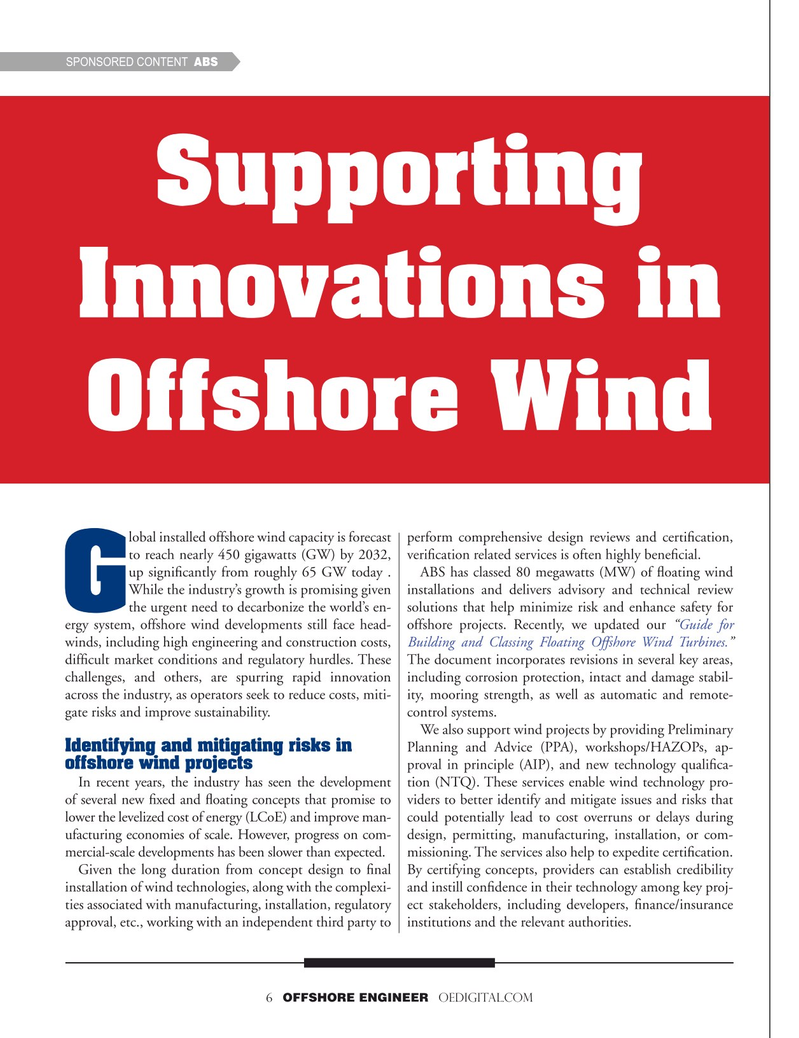
Page 6: of Offshore Engineer Magazine (Jan/Feb 2024)
Read this page in Pdf, Flash or Html5 edition of Jan/Feb 2024 Offshore Engineer Magazine
SPONSORED CONTENT ABS
Supporting
Innovations in
Offshore Wind lobal installed offshore wind capacity is forecast perform comprehensive design reviews and certifcation, to reach nearly 450 gigawatts (GW) by 2032, verifcation related services is often highly benefcial. up signifcantly from roughly 65 GW today . ABS has classed 80 megawatts (MW) of foating wind
While the industry’s growth is promising given installations and delivers advisory and technical review
Gthe urgent need to decarbonize the world’s en- solutions that help minimize risk and enhance safety for ergy system, offshore wind developments still face head- offshore projects. Recently, we updated our “Guide for winds, including high engineering and construction costs, Building and Classing Floating Offshore Wind Turbines.” diffcult market conditions and regulatory hurdles. These The document incorporates revisions in several key areas, challenges, and others, are spurring rapid innovation including corrosion protection, intact and damage stabil- across the industry, as operators seek to reduce costs, miti- ity, mooring strength, as well as automatic and remote- gate risks and improve sustainability. control systems.
We also support wind projects by providing Preliminary
Planning and Advice (PPA), workshops/HAZOPs, ap-
Identifying and mitigating risks in proval in principle (AIP), and new technology qualifca- offshore wind projects
In recent years, the industry has seen the development tion (NTQ). These services enable wind technology pro- of several new fxed and foating concepts that promise to viders to better identify and mitigate issues and risks that lower the levelized cost of energy (LCoE) and improve man- could potentially lead to cost overruns or delays during ufacturing economies of scale. However, progress on com- design, permitting, manufacturing, installation, or com- mercial-scale developments has been slower than expected. missioning. The services also help to expedite certifcation.
Given the long duration from concept design to fnal By certifying concepts, providers can establish credibility installation of wind technologies, along with the complexi- and instill confdence in their technology among key proj- ties associated with manufacturing, installation, regulatory ect stakeholders, including developers, fnance/insurance approval, etc., working with an independent third party to institutions and the relevant authorities. 6 OFFSHORE ENGINEER OEDIGITAL.COM

 5
5

 7
7